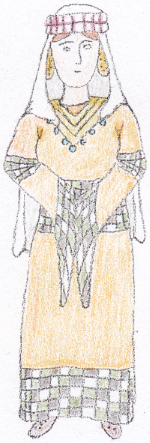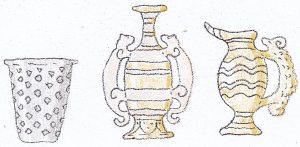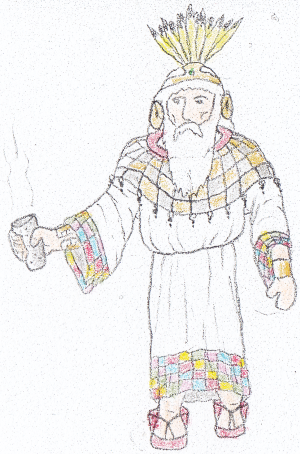Dalrans
Dalran: Dalrere
Rexlas: Dalrei
Húlpakric: Dalrö
Enmohó: Dalhen
Ebþúkic: Dalrat
The dalrans1 are the rulers and main ethnic group of the empire of Dalra in eastern Emlas. Most live in and around the city of Sarka in the Zamra Mountains or Kilí, capital of the empire along the Namazús River.
Dalrans have also constructed or improved on a network of roads, bridges and even tunnels that connect even the smallest village to the capital, and grant the empire's citizens (and, more importantly, army) easy access across its counties, whether through mountains, deserts, woods or across rivers and lakes.
The dalrans1 are the rulers and main ethnic group of the empire of Dalra in eastern Emlas. Most live in and around the city of Sarka in the Zamra Mountains or Kilí, capital of the empire along the Namazús River.
History
Dalrans were originally nomadic pastoralist in the Zamra Mountains, and for a time were subjects of the Vanrans until they rebelled against the latter due to mismanagement, and founded the independent kingdom of Dalra. This sparked a wave of revolts amongst the other mountain tribes, who united under the banner of the dalran king Paxatres and managed to overthrow the vanrans. The dalrans then continued expanding their territory until they ruled much of eastern Emlas, and are currently at war with the Imkalans to the west in an attempt to acquire new lands to the west.Culture
Apparel
Traditional dalran clothing resembles that of other Zamra Mountain tribes and is largely the same for men and women; a thick tunic with long, wide sleeves -usually slightly shorter for men- woven from sheep- or long-haired donkey wool, and either sheepskin shoes or sandals. The tunics usually have wide decorative borders, with different colour combinations indicating each person's tribe and hometown, as does different headgear.
Jewelry made of metal or terracotta, such as earrings, necklaces and bracelets, is popular by dalrans, both for decoration as well as apotropaic devices. Aristocrats sometimes wear wide collars imitating traditional woolen shawls, made of gold and silver plaques. Common motifs include stylized solar, rainbow and butterfly imagery.
Long hair and beards are favoured by dalrans, with different hairstyles depending on the person's status, tribe and place of birth, some of which are influenced by the numerous other styles worn by other cultures within the empire.
Jewelry made of metal or terracotta, such as earrings, necklaces and bracelets, is popular by dalrans, both for decoration as well as apotropaic devices. Aristocrats sometimes wear wide collars imitating traditional woolen shawls, made of gold and silver plaques. Common motifs include stylized solar, rainbow and butterfly imagery.
Long hair and beards are favoured by dalrans, with different hairstyles depending on the person's status, tribe and place of birth, some of which are influenced by the numerous other styles worn by other cultures within the empire.
Art
Architecture
Since their conquest of eastern Emlas, dalran art and architecture have been influenced by virtually every culture within the empire and beyond, creating an imperial style that is at once varied and distinctly dalran. The main materials are stone -in the highlands-. sometimes using cyclopean masonry, or clay bricks elsewhere. Temples and public buildings are gilded and painted in bright colours, both to make them more visible from distance and to indicate their purpose for the illiterate.Dalrans have also constructed or improved on a network of roads, bridges and even tunnels that connect even the smallest village to the capital, and grant the empire's citizens (and, more importantly, army) easy access across its counties, whether through mountains, deserts, woods or across rivers and lakes.
Pottery
Dalran pottery is heavily influenced by the vanrans, often gilded and with handles shaped like animals. Cups made in older dalran styles are still used though, especially for libations, which is generally simpler and adorned with geometric shapes.Cuisine
Main article: Dalran CuisineLanguage
Main article: DalranScience and technology
Mathematics
Like most people of eastern Emlas, dalrans use a numeral system based on sixty, a legacy of the ancient Ilaxarans.Religion
Main article: Dalran PolytheismWarfare
Main article: Dalran Military1Original icelandic: Dalrar, singular: Dalri













Comments